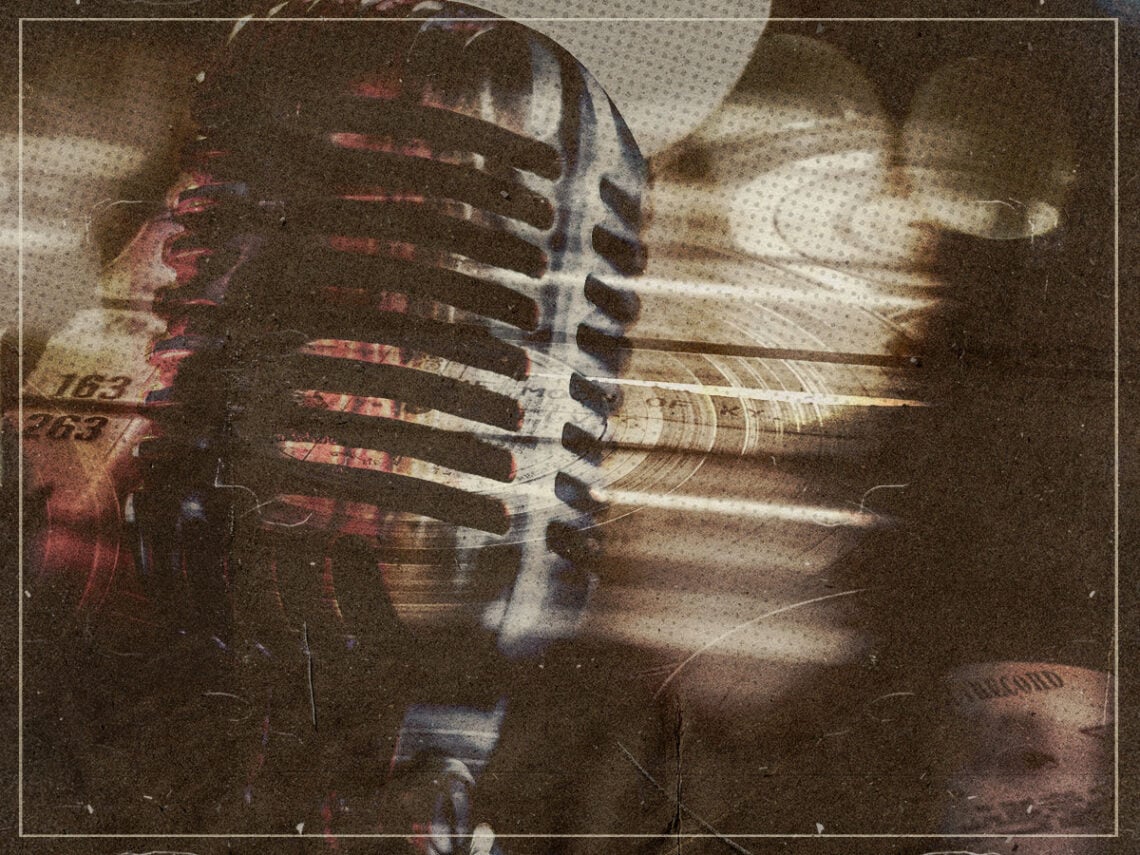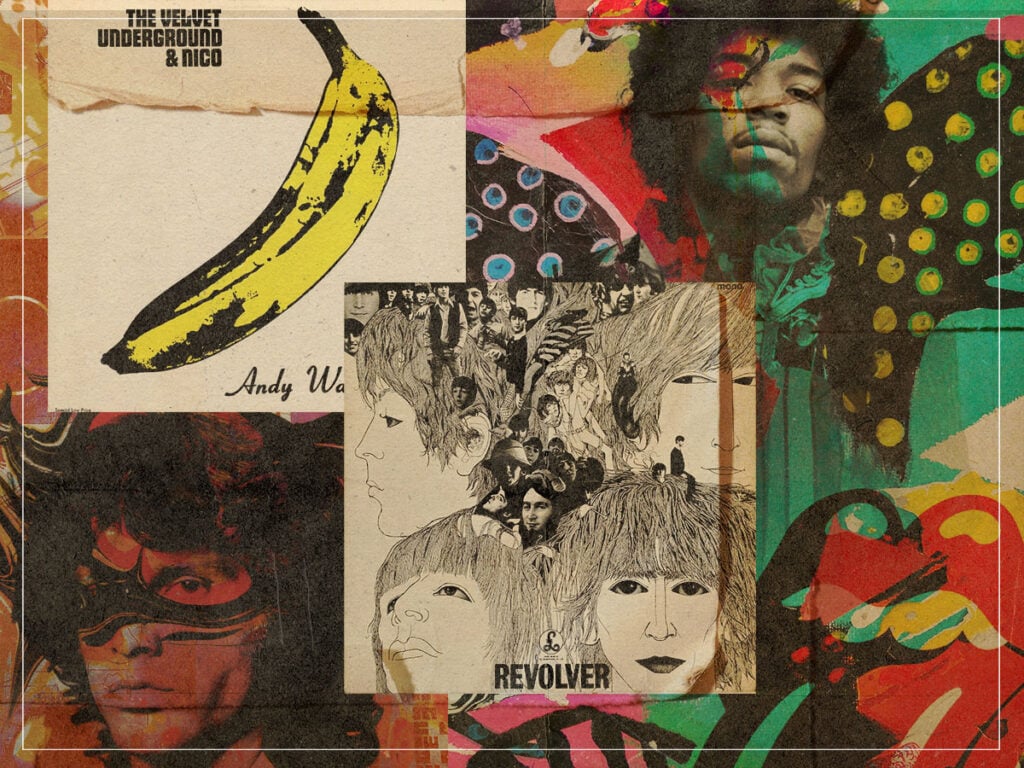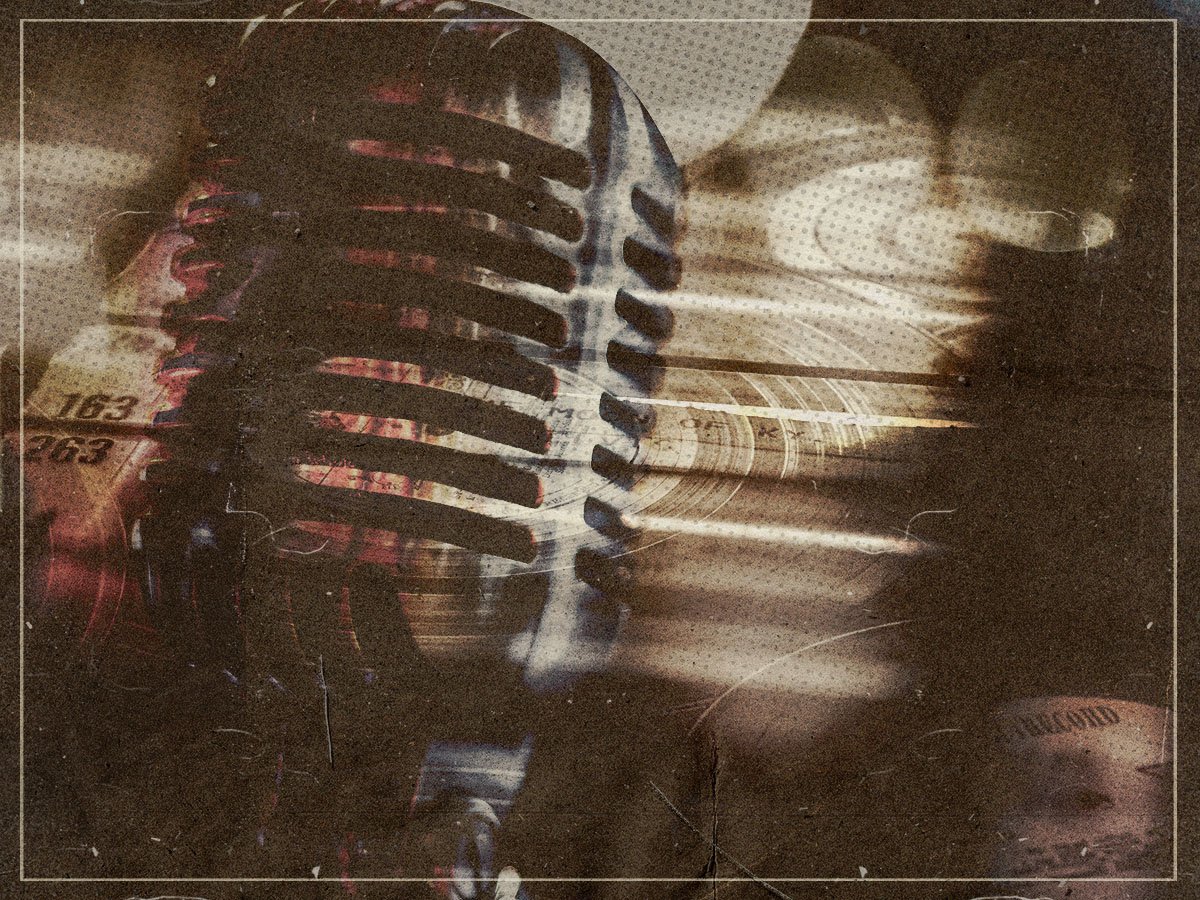
(Credits: Far Out / Israel Palacio / Alexandr Sadkov)
Sat 21 June 2025 16:30, UK
It all began with the baritone boom of Elvis Presley. His growling voice seemed to rattle through the ether like a thunderstorm, clearing the air for the raucous ways of the 1960s.
Just as the technological age was swinging into view, The King ensured that culture wouldn’t become a white coat experiment, but rather a visceral marriage of newness and originality—two very different things, as proven by the present era of paradoxical ‘pioneering 4K-ultra remakes’.
When the King emerged, singers had only been using microphones for around 30 years. Prior to this breakthrough, they simply had to project to the back of the room, and over the noise of the band, too. In an instant, music was changed. Suddenly, microphones offered singers a greater sense of nuance and drama. If Elvis had been trying to growl above a crowd night after night, his vocal cords would be as rough as a cheese grater. Now, he was able to do it with relative ease and throw in a seductive whisper, too.
Singing had expanded. The art form had changed. Before the 1920s, bravura was the performative mainstay, namely because you had to make yourself loud enough to be heard. Now you had eerie anthems like ‘Paint it Black’, where the backing might sound like a clattering minor anthem, but Mick Jagger’s juxtaposed, withdrawn whisper plays upon the rock song motif in a gripping manner.
Like all of his peers, Jagger was the beneficiary of simple amplification. It was an advancement that brought out the best in lead singers. Thanks to the wizardry of the 1960s, the chirpy folks behind a microphone could scream, whisper, croon and rap in the matter of a single verse. It brought out the best in vocalists, right down to the limits of their range. But nobody did it better than Jagger’s own idol.
So, who had the best vocal range of the 1960s? (Credits: Far Out / Alamy / Bent Rej / Apple Corps / Universal Records)
(Credits: Far Out / Alamy / Bent Rej / Apple Corps / Universal Records)
The results for the list come from a study by Concert Hotels, who ran the records of just about every classic pop culture artist through a monitoring system and clocked the highest and lowest notes they’ve sung to create a vocal range league. The highest note they clocked was from Mariah Carey, while the lowest was from the typically falsettoed Axl Rose, who even eclipsed Barry White in the deep end stakes.
But when it comes to the decade where this singing style really came to the fore, it was James Brown who kick-started a revolution. From his searing screech that sounded like air coming out of a tire in the best possible way to his soulful grumble that seemed as though it could summon the dead, the Godfather of Funk could do it all—and he could do it all while dancing.
In fact, he showcased his range in very department when he performed on the The T.A.M.I Show on October 28th, 1964. A young Jagger was backstage, having watched the maestro at work, and Marvin Gaye had to console him, bravely encouraging him to follow Brown’s brilliance by famously saying, “Just go out there and do your best.”
It was hardly supremely reassuring, but what else could you say? Brown was wiping the floor with everyone as a frontman. He was a live-wire who could scream the house down, rumble the foundations and even get sultry with an ominous whisper. With a few outlying exceptions, he could generally spring from E2 to F6, straddling four octaves with ease.
He would embellish this range with trademark yelps, grunts, and little snippets of performative spoken word. And he was so note-perfect as he went along that he could hear by ear any time one of his band wavered out of line for even a split second to such an extent that he would fine them from a logbook of his mental notes after the show.
Related Topics
The Far Out Music Newsletter
All the latest music news from the independant voice of culture.
Straight to your inbox.
